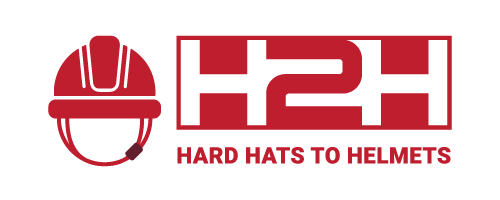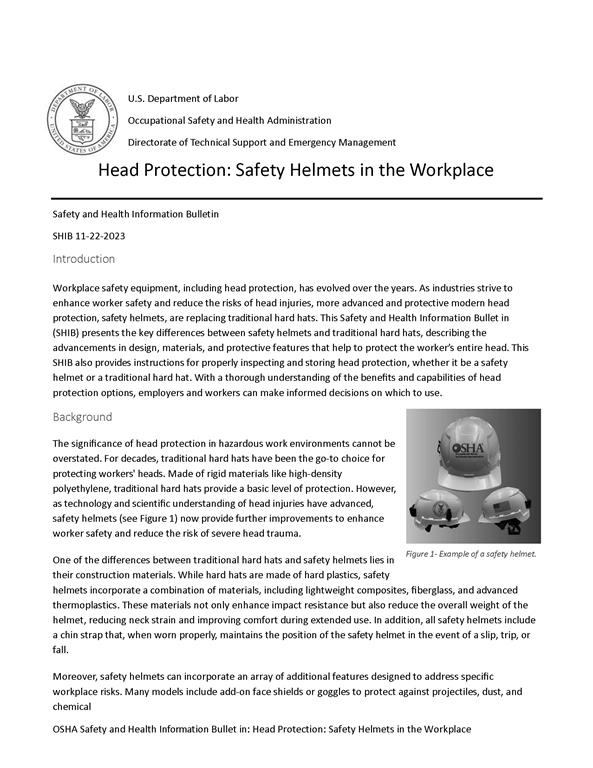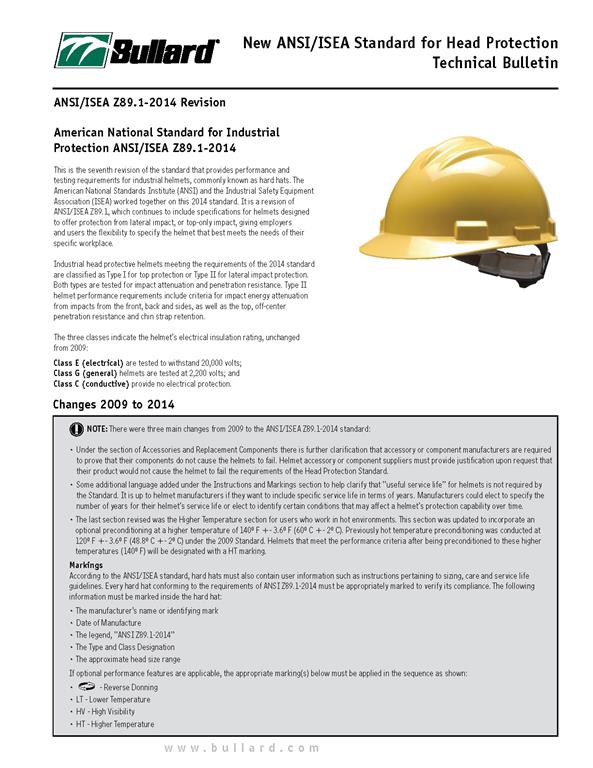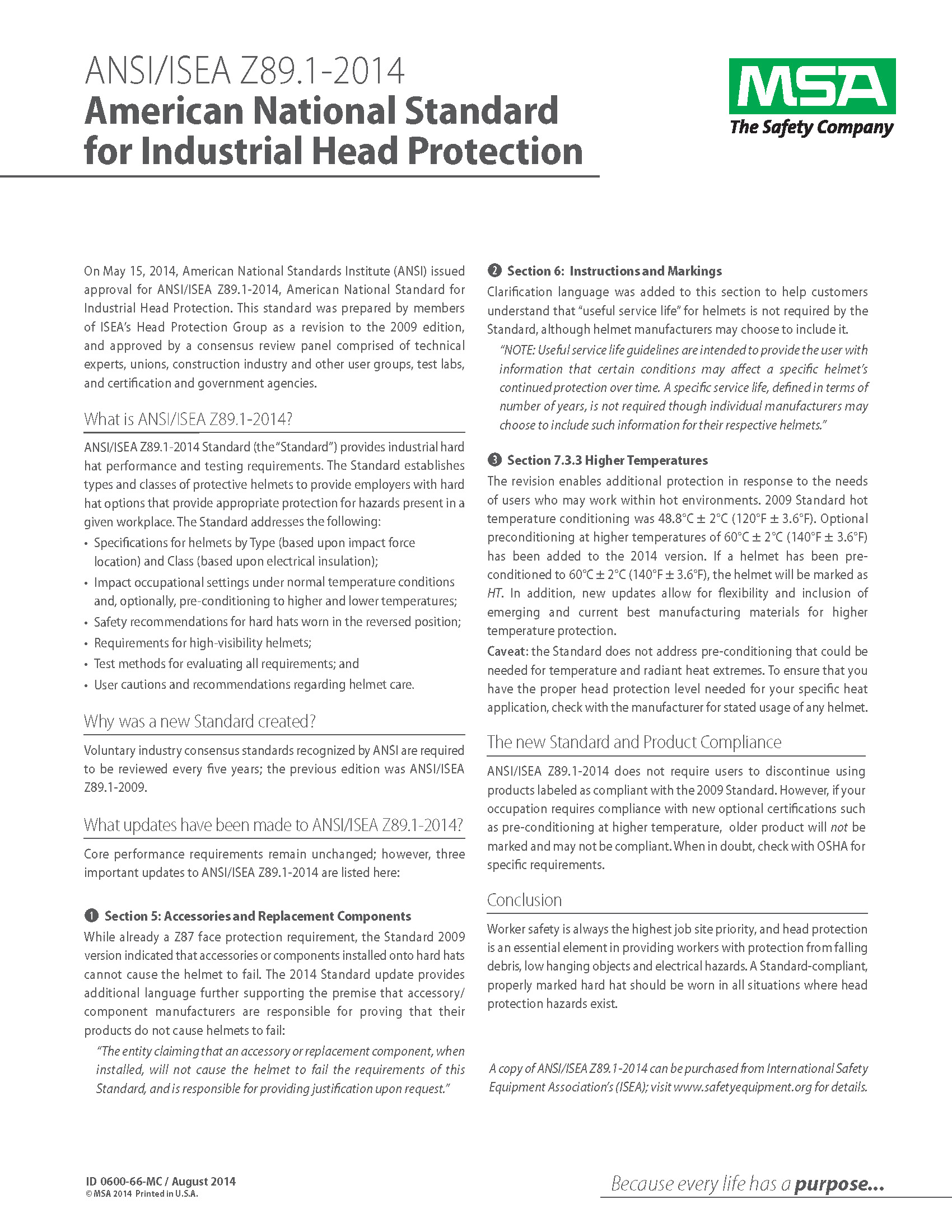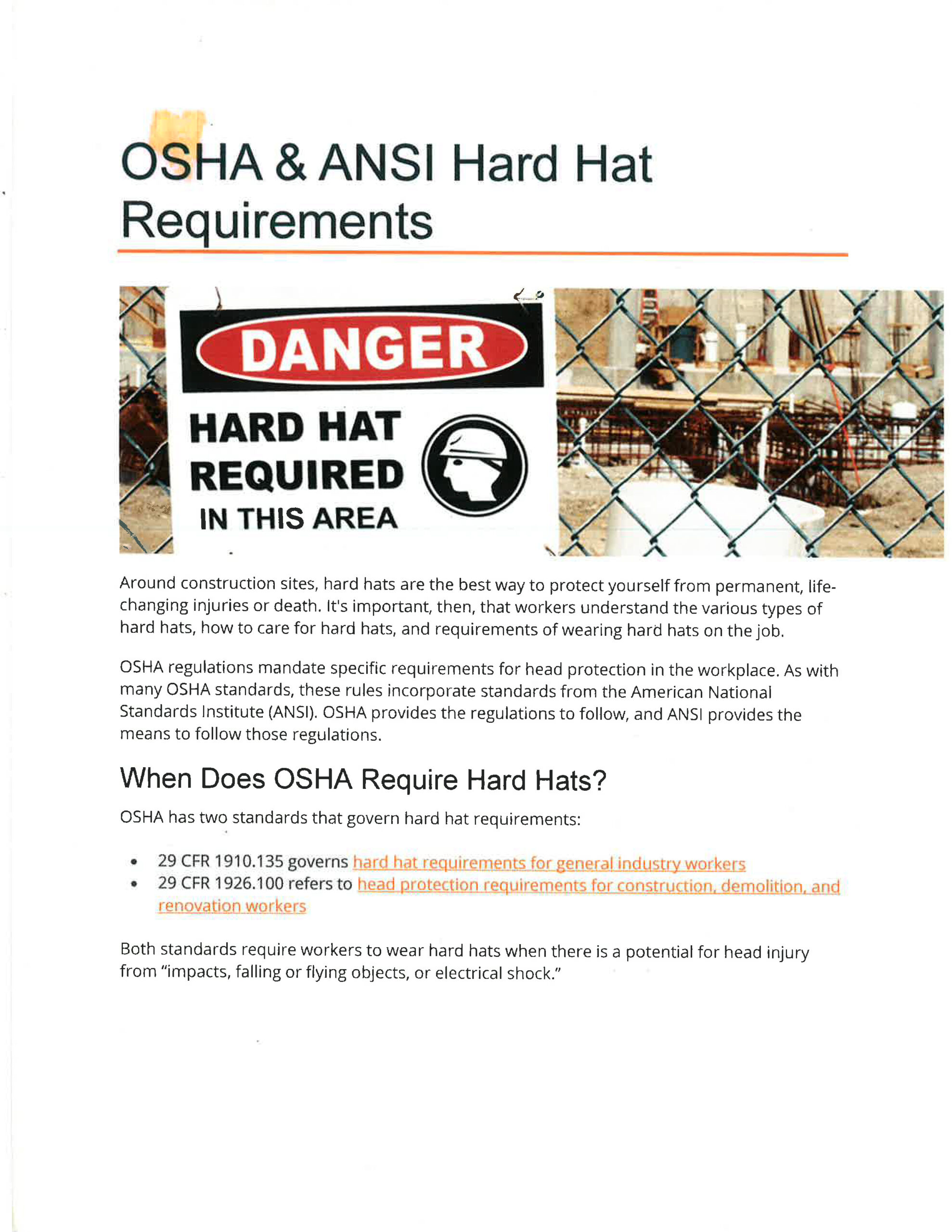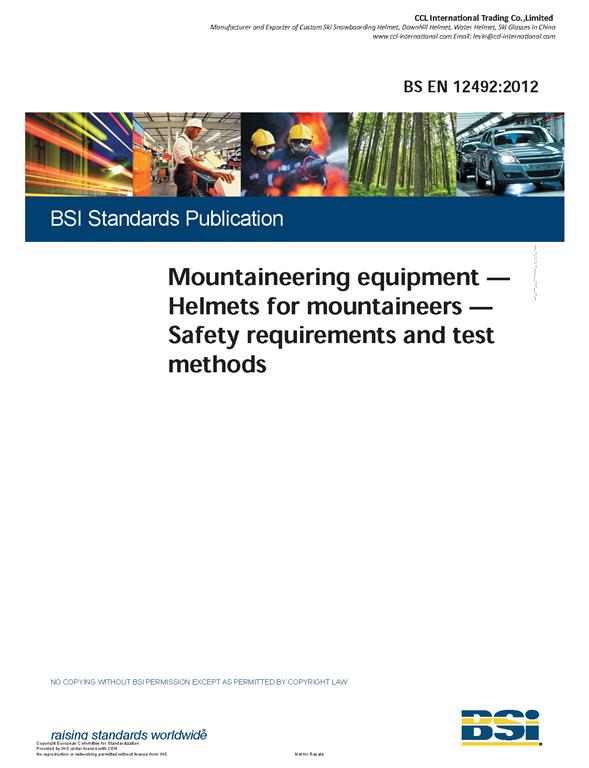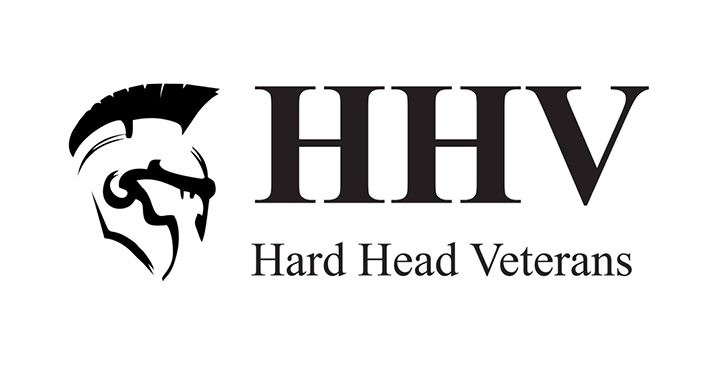Regulatory Requirements and Technical Specifications
Regulatory requirements, technical specifications and applicable standards and news regarding regulatory development and actions.
OSHA Bulletin | Head Protection: Safety Helmets in the Workplace
On Nov. 22, 2023, OSHA published a Safety and Health Information Bulletin detailing key differences
between traditional hard hats and more modern safety helmets and the advancements in design, materials
and other features that help protect workers’ entire heads better.
The agency recommends safety helmets be used by people working at construction industry and the oil
and gas industry; in high-temperature, specialized work and low-risk environments; performing tasks
involving electrical work and working from heights; and when required by regulations or industry
standards.
ANSI Z89.1 and EN 12492 Helmet Testing Videos
American National Standard Safety Requirements for Head Protection Technical Bulletin
Industrial head protective helmets meeting the requirements of the 2014 standard are classified as Type I for top protection or Type II for lateral impact protection. Both types are tested for impact attenuation and penetration resistance. Type II helmet performance requirements include criteria for impact energy attenuation from impacts from the front, back and sides, as well as the top, off-center penetration resistance and chin strap retention.
ANSI/ISEA Z89.1-2014 White Paper
On May 15, 2014, American National Standards Institute (ANSI) issued approval for ANSI/ISEA Z89.1-2014, American National Standard for Industrial Head Protection. This standard was prepared by members of ISEA’s Head Protection Group as a revision to the 2009 edition, and approved by a consensus review panel comprised of technical experts, unions, construction industry and other user groups, test labs, and certification and government agencies.
OSHA & ANSI Hard Hat Requirements
Around construction sites, hard hats are the best way to protect yourself from permanent, life-changing injuries or death. It’s important, then, that workers understand the various types of hard hats, how to care for hard hats, and requirements of wearing hard hats on the job.
Mountaineering equipment — Helmets for mountaineers — Safety requirements and test
methods
The protection given by a helmet depends on the circumstances of the accident and wearing a helmet cannot
always prevent death or long term disability.
A proportion of the energy of an impact is absorbed by the helmet, thereby reducing the force of the blow
sustained by the head. The structure of the helmet may be damaged in absorbing this energy and any helmet
that sustains a severe blow needs to be replaced even if damage is not apparent.
Mountaineers’ helmets are fitted with a retention system to retain the helmet on the head. However, there may
be a foreseeable risk that helmets could become trapped and thereby cause a risk of strangulation.
Standard Interpretations | Occupational Safety and Health Administration | Head Protection: 1926.100
1926.100(a)
Employees working in areas where there is a possible danger of head injury from impact, or from falling or flying objects, or from electrical shock and burns, shall be protected by protective helmets.
1926.100(b)
Criteria for head protection.
Comparison of Hard Hat and Helmet Standards
Get to know the U.S., European, and Canadian standards for safety helmets
Unsure what kind of safety helmet you need? What helmets comply with what standard? Where to start? We want to make sure staying compliant is second nature, especially when it comes to keeping your head safe. There’s a lot to know and a lot to pay attention to when it comes to safety helmets, but don’t worry – we’ve done the research for you. In this blog, we’ll dig into OSHA, ANSI, EN, and CSA standards.
The ANSI Z89.1 Standard for Hard Hats & Construction Helmets: A Guide
With construction workers facing the highest occupational risk of traumatic brain injuries (TBIs), hard hats are a critical piece of equipment on the job site. But what safety standards matter most—and how do you know that the construction helmet you choose offers appropriate protection?
